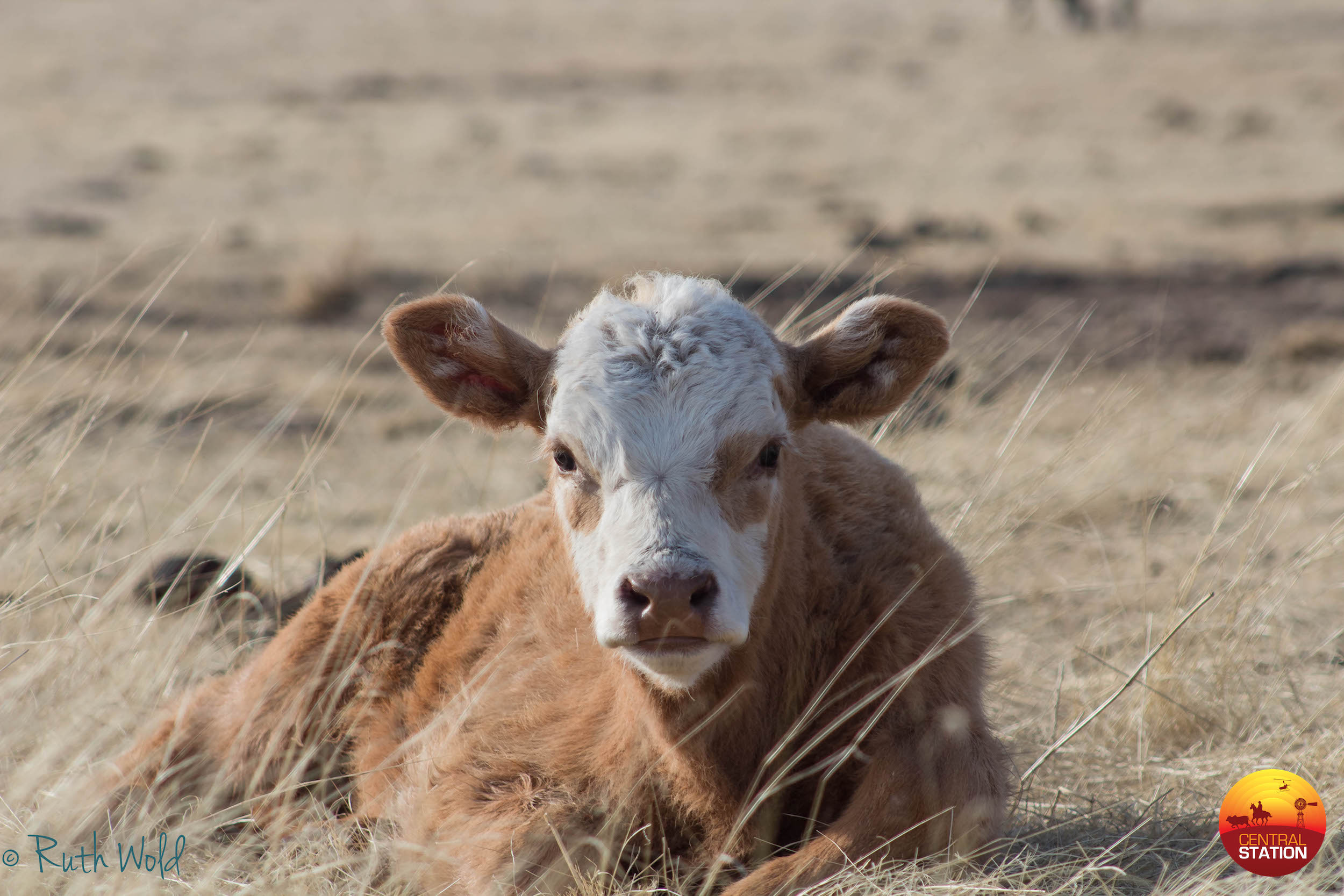Fall works
Host: Mescalero Apache Cattle Growers, New Mexico, USA
Written by Ruth Wold, Managers Assistant
This is part 5 in a 5-part series about managing a Native American Reservation ranch. Find part one here, part two here, part three here and part four here.
While the glamour and romance seem, for a newbie, to be wrapped up in branding smoke and irons during the summer, for the Ranch Manager, it all comes down to Fall. Fall is when we wean, market, sell and ship calves and when we preg-check our cows and heifers for the coming year. Spring Branding is all action and adventure, roping and sweat. Fall, well, fall works is monotonous, it is long days of cattle in the lanes and lead-ups. The drone of motor of the hydraulic chute and the banging of gates. It is also ranch pay-day. Everything that we do all year comes down to this season. This is our reward, getting to hand over that check to the Tribal Accounting office.
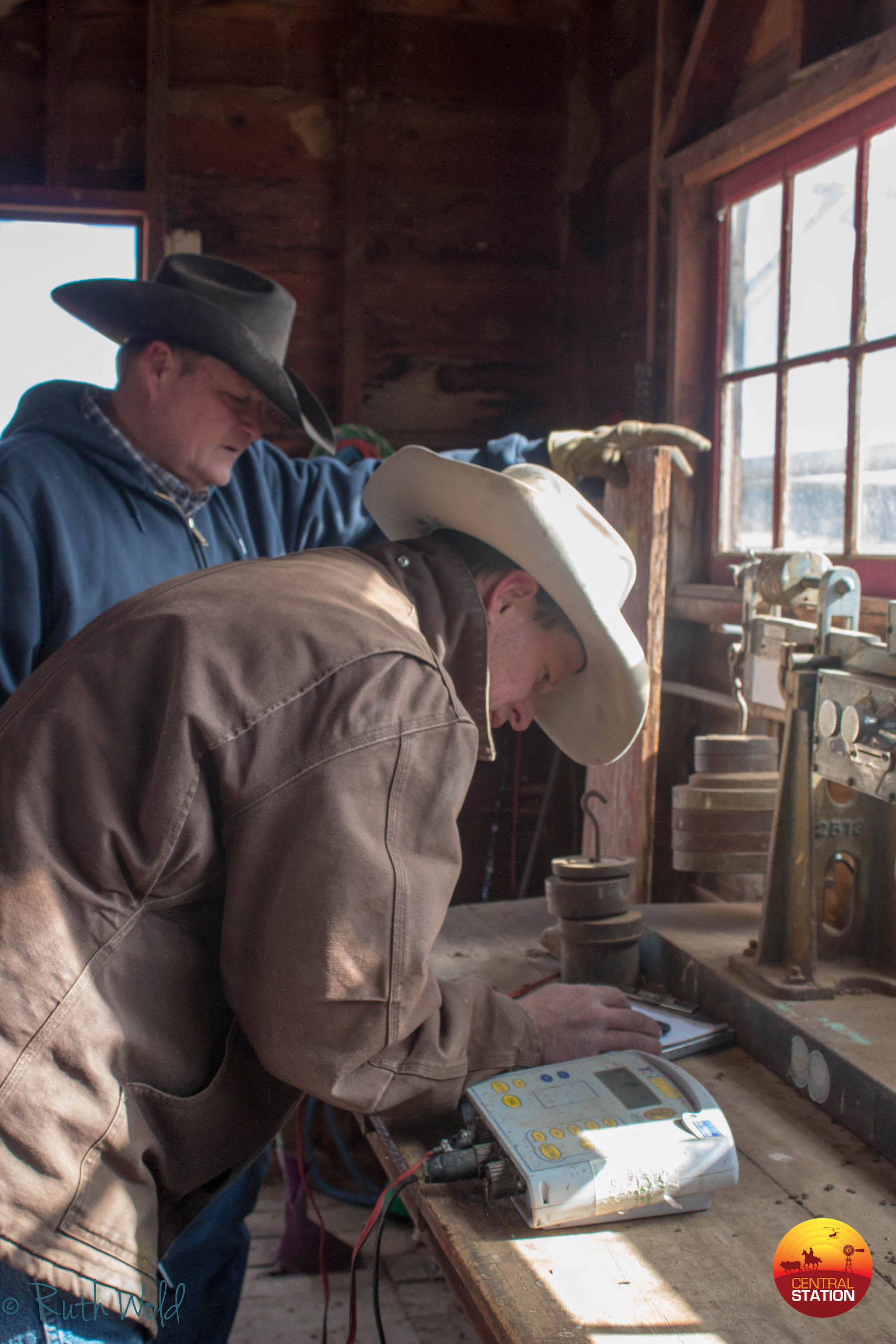 Dusty settling up with the buyer in the scale house.
Dusty settling up with the buyer in the scale house.
We begin to bring pairs in from the high country into Cow Camp #1 starting in September. The fences around the traps are checked to be sure that the elk haven’t torn them up too badly. We start the long days in October, weaning and preg-checking. All cows and calves are brought into the corral, the dull roar of the corrals is reminiscent of a jet engine. The crew spends a long day sorting cows from calves. Calves are put into the traps right off the corrals near the house. We then turn the cows into separate traps to wait overnight for the veterinarian to come the next morning. Preg-checking is done by our local vet, we see him a few times a year and this two to three days of preg-checking give us an opportunity to visit.
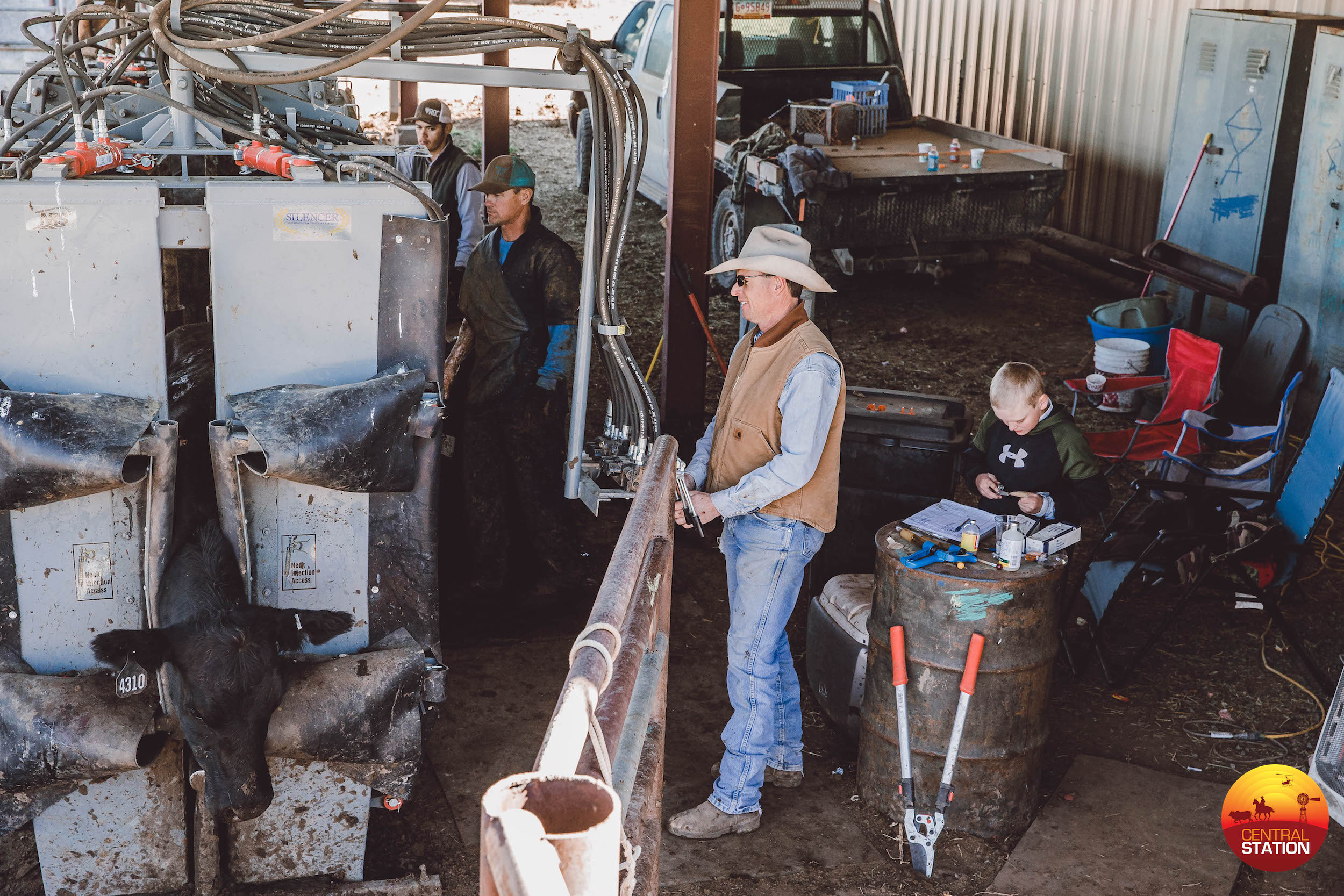 A view with our vet looking towards the chute, Fall 2017. Photo credit: Steph Coombes.
A view with our vet looking towards the chute, Fall 2017. Photo credit: Steph Coombes.
Cows come into the corral and are moved through the lane up to the hydraulic chute, where the vet does the deed. At this point we still do a manual checking, a very messy business. We have 5 hands up at the chute, Dusty usually runs the head gate and vaccinates. I sit near him and keep a count of our open and bred cows and their ages, as well as keep the vaccine gun full. The vet is on our side of the chute. On the other side we have two others, one that takes out the ear tags of open cows and or replaces missing tags and one that administers insecticide. Then we still have around 4 to five hands in the back, pushing cattle into the lane and keeping the flow of cattle going.
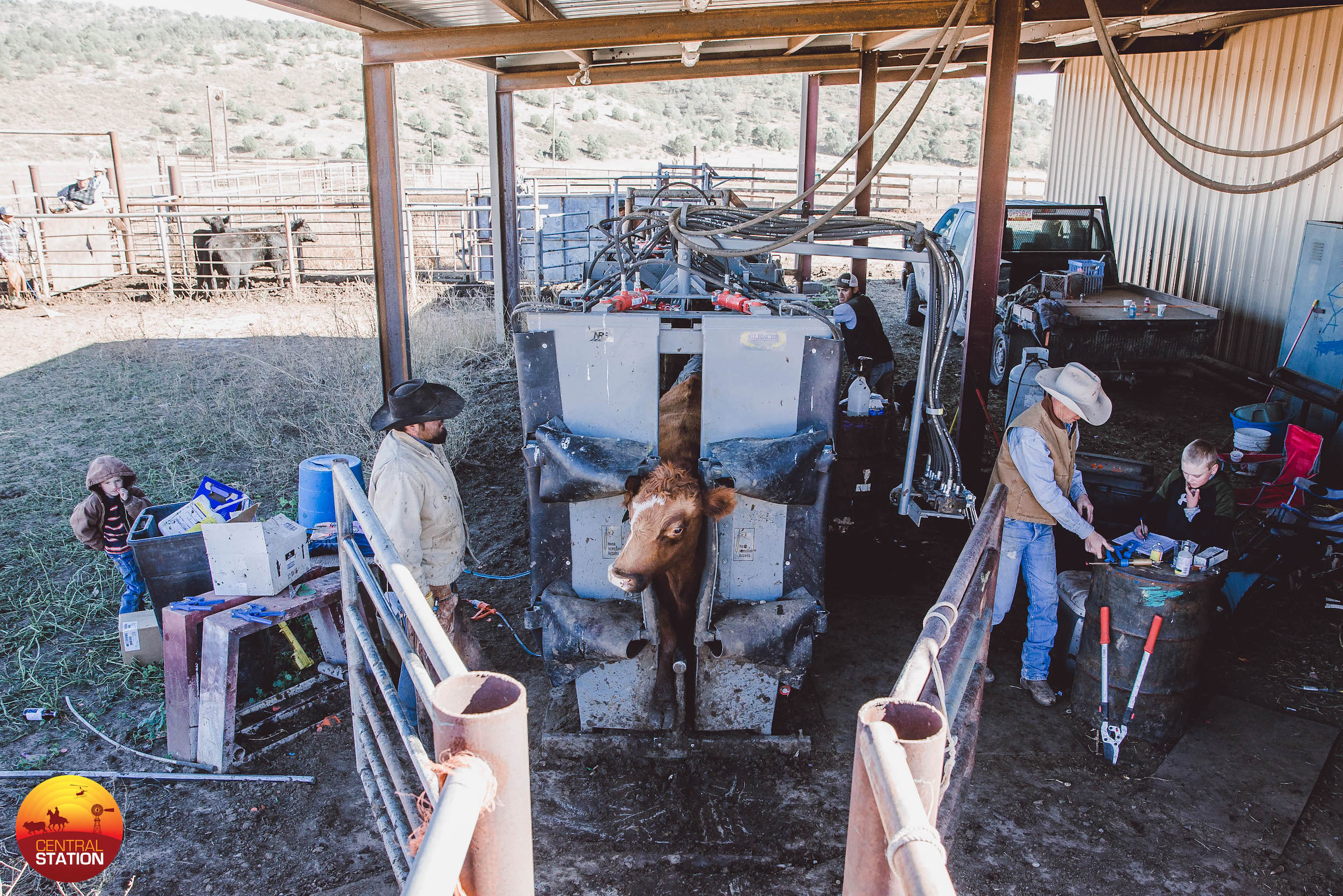 A good view the action during preg checking. Fall 2017. Photo credit: Steph Coombes.
A good view the action during preg checking. Fall 2017. Photo credit: Steph Coombes.
Last year we checked 500 cows in one day. That was moving them through and made for a later than normal day. Cows that are checked and “open” meaning they are not pregnant are culled off and sold. Older cows, 13 years or more, are also culled in the fall. Bred cows are vaccinated with 7 Way with Somnus and CattleMaster VL5 and given insecticide as well as an injection of Vitamin A and D and turned out to the lower elevations of the ranch. Culling the cattle this way has helped with the quality of cows and has also prevented disease in the herd. It has also helped increase the overall fertility in our cow herd. The first year here we inherited a breeding program with a 65% calf crop, this year the breed up percentage was 92%. We can’t complain about that!
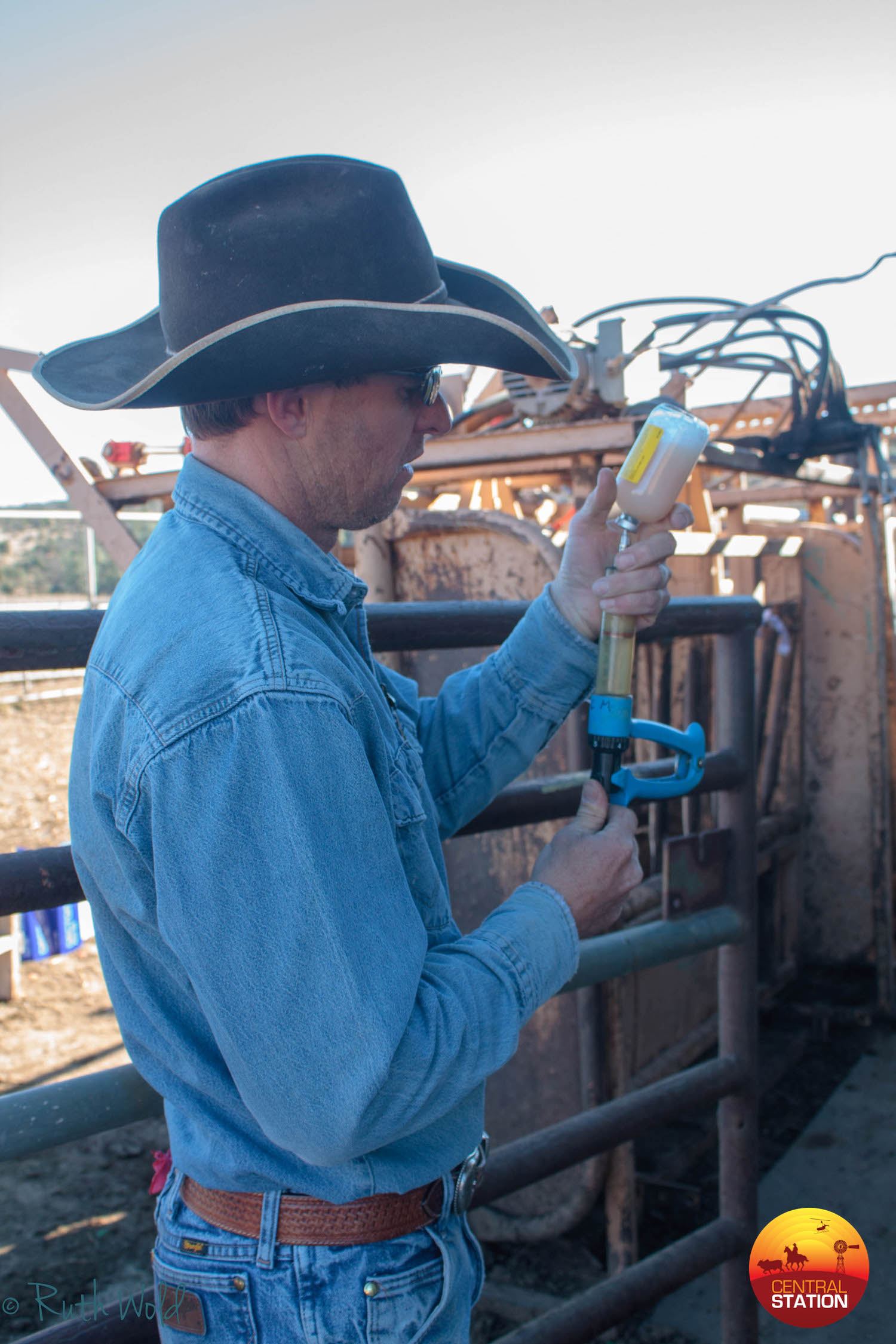 Dusty mixing vaccine, Fall 2015.
Dusty mixing vaccine, Fall 2015.
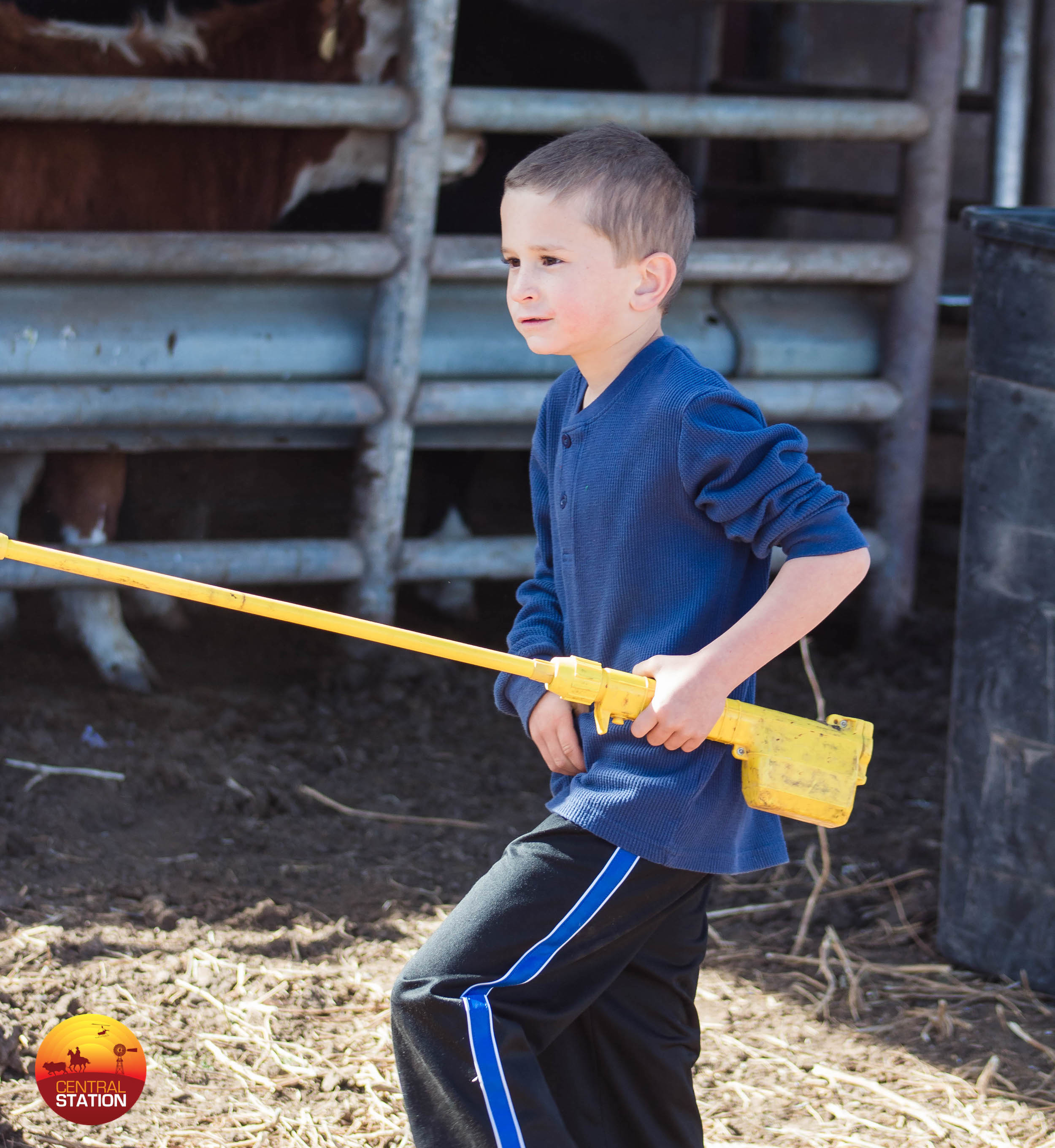 Cord helping move calves through the lead up, Fall 2017.
Cord helping move calves through the lead up, Fall 2017.
Calves are brought back into the corral about a day after the cows. We give all the calves a 2nd round of CattleMaster 5 and give a dose of vaccine against Pasteurella, we also administer a nasal vaccine to provide additional support to the CattleMaster vaccine and worm calves against parasites.
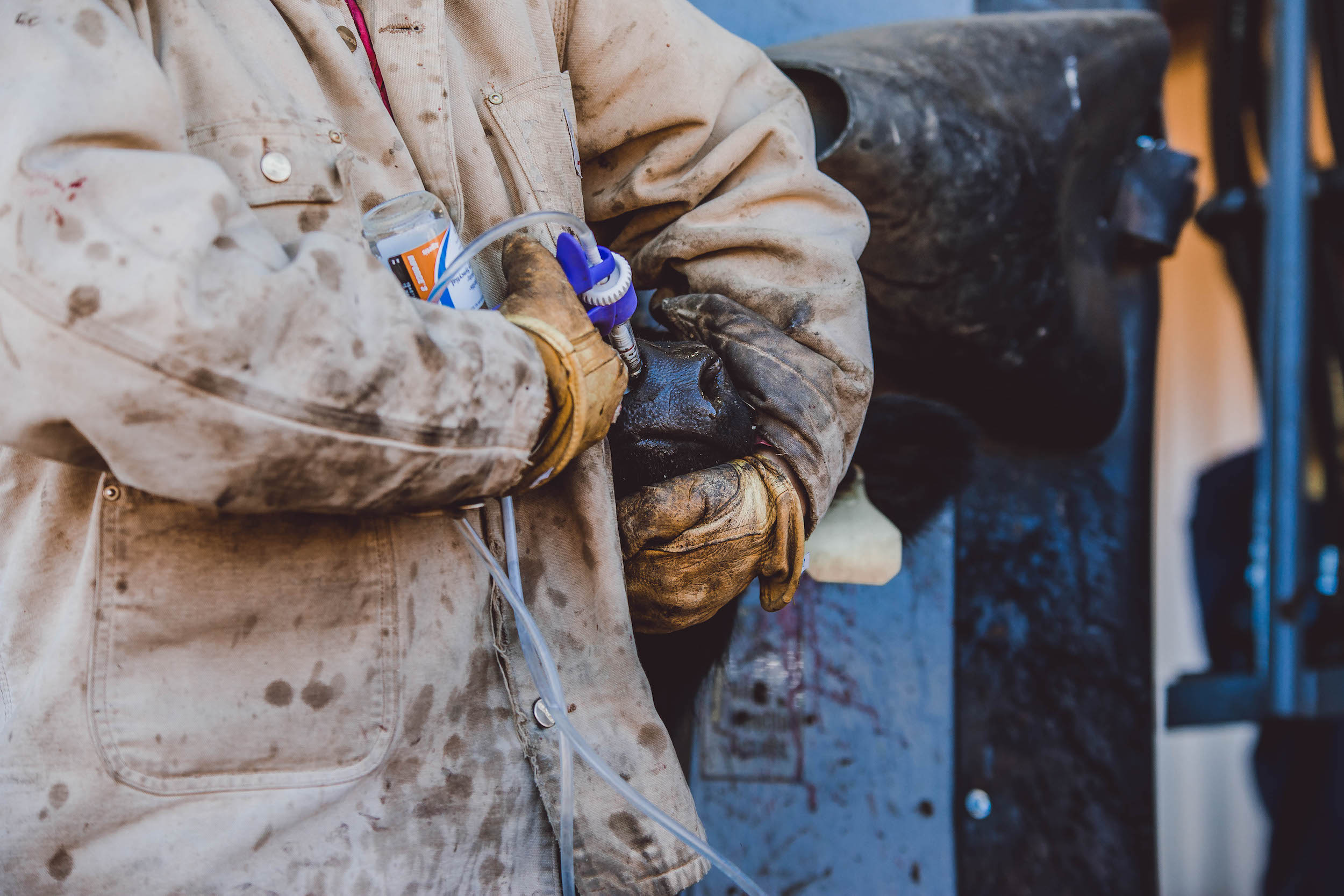 Administering the nasal vaccine. A messy situation. Photo credit: Steph Coombes.
Administering the nasal vaccine. A messy situation. Photo credit: Steph Coombes.
We then turn them out into a close pasture to keep an eye on them and watch for sick ones. We will then follow-up those vaccines, excluding the nasal and wormer within two weeks. We will keep them about 6 weeks for pre-conditioning before we ship them. Pre-conditioning adds value to the calves. The ranch sells calves through a phone-in bid process. Buyers are invited to view the steers either in person or by video and given a date that bids are due. Highest bidder gets the calves. For the last three years our highest buyer was LaBatt Foods. LaBatt has developed a branded beef product, “Native American Beef.” Native American Beef is available in the Tribe’s hotel-casino restaurants. LaBatt purchases and finishes beef from Native tribes and makes it available for purchase as a branded product. This partnership has been beneficial to both the ranch and to LaBatt. It is with no small sense of pride when we have a meal at the Inn of the Mountain Gods and see Native American Beef on the menu, knowing that we raised that!
Shipping is the ultimate pay day, it all comes down to that morning. The Tribal Brand inspector is called, health inspection papers have been picked up from the vet, and cattle trucks are lined up waiting to be loaded. Shipping itself is pretty standard, we have a set of scales here at Cow Camp #1.
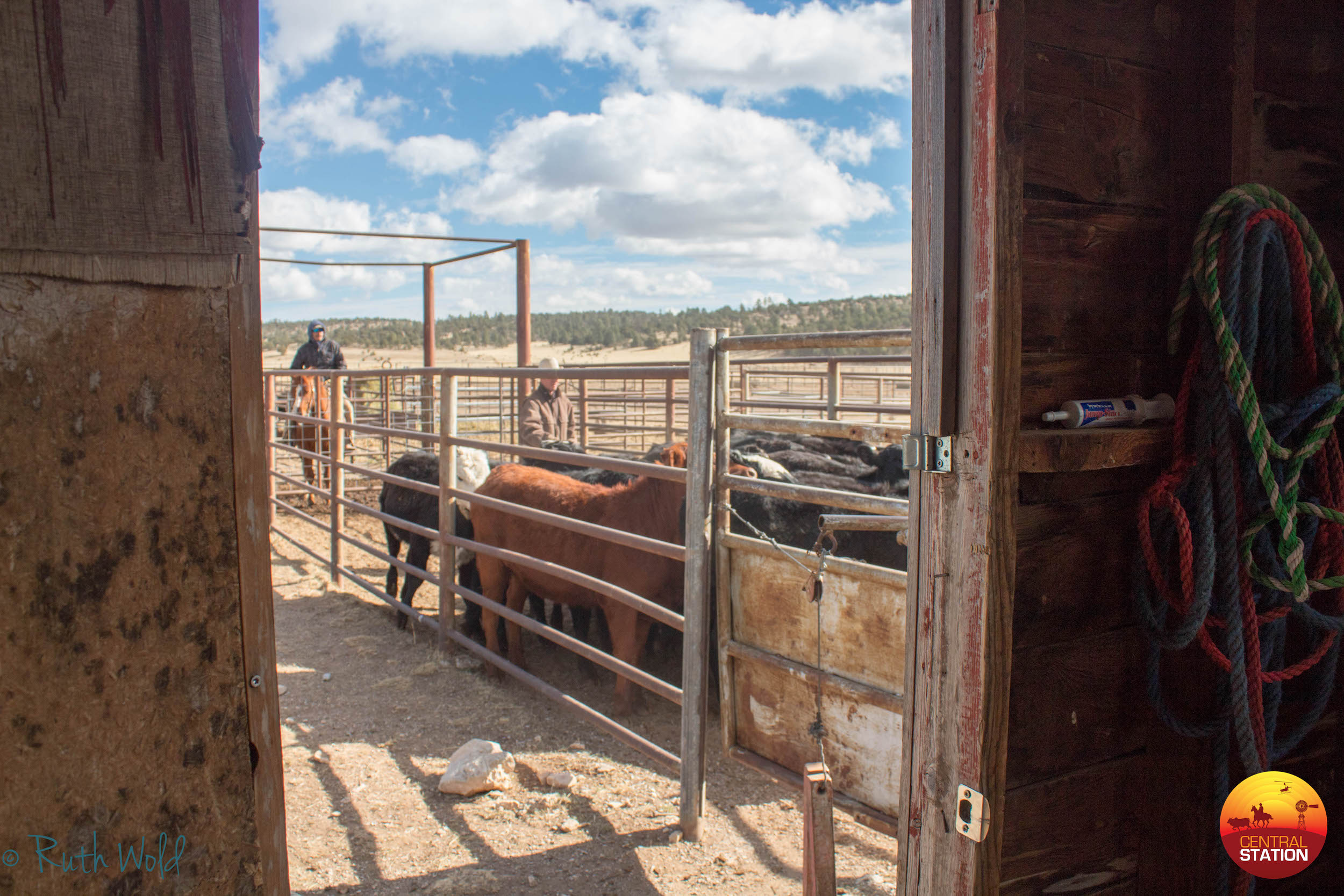 My view from the scale house as they load onto the scale. Fall 2017
My view from the scale house as they load onto the scale. Fall 2017
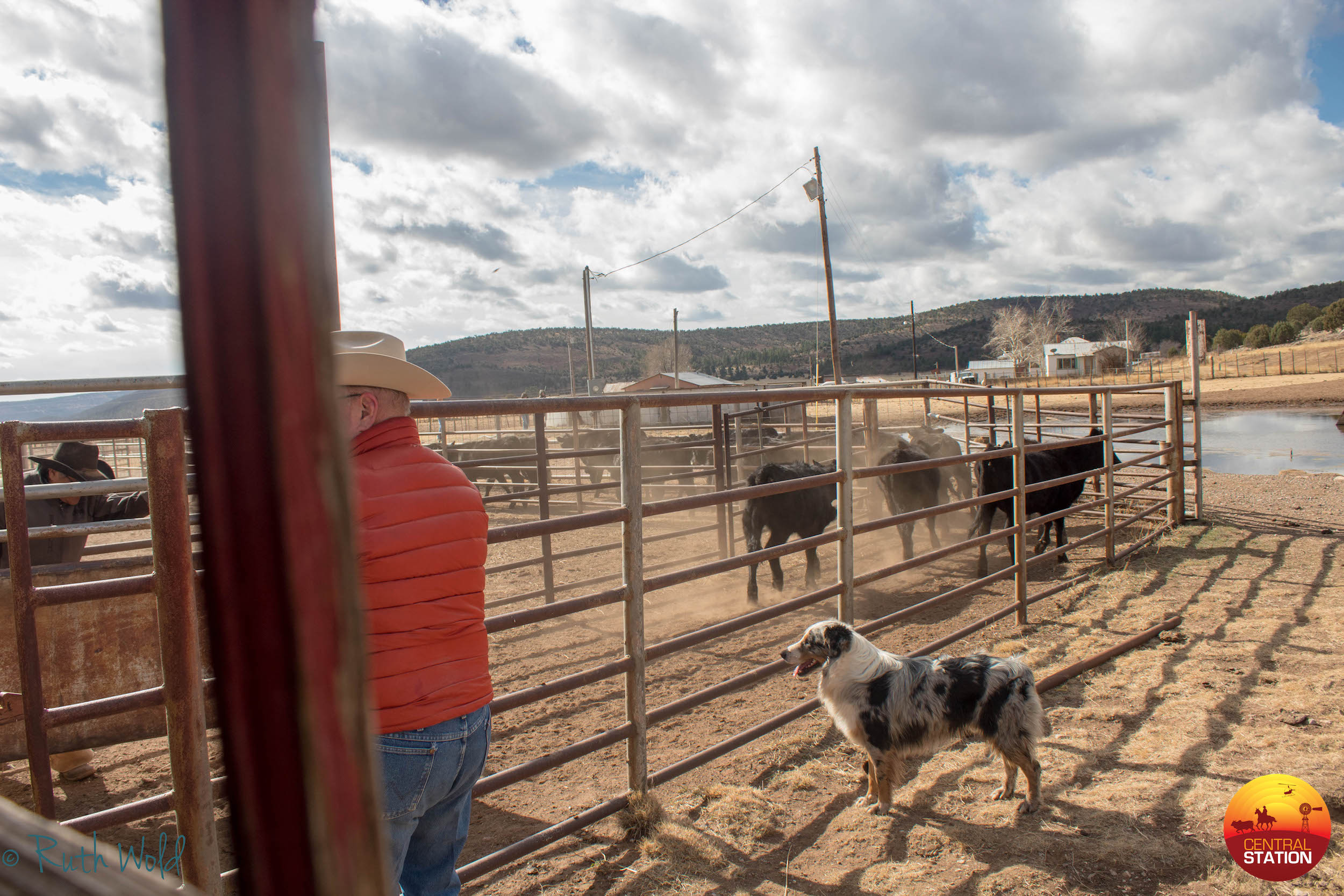 Calves coming off the scales, looking out of scale house window, Fall 2017
Calves coming off the scales, looking out of scale house window, Fall 2017
I end up inside watching the digital scale and recording the weights as the calves come across. We take an average weight and are paid on the total average weight. Calves are then loaded in into the double-decker trailers. The way the trailers are loaded is governed by the USDA and each trailer is limited on how much weight they can legally haul. 50,000 lbs. is the maximum legal weight for each trailer or “pot.” Calves are divided to distribute the weight, how they are divided depends on the driver. One of the things that blew our little American minds was seeing two trailers in Australia hooked on one truck, we are definitely not allowed to do that! We are limited to the single trailer on one truck. This fall we shipped 435 steer calves which required 5 trucks. This didn’t include the 3 loads of steers that shipped later, the 2 loads of heifers that were shipped or the 2 loads of cull cows. So, you see, we don’t usually have just one day of shipping. The biggest day is the first bunch of steer calves and we are usually seeing the tail-lights of the truck around noon.
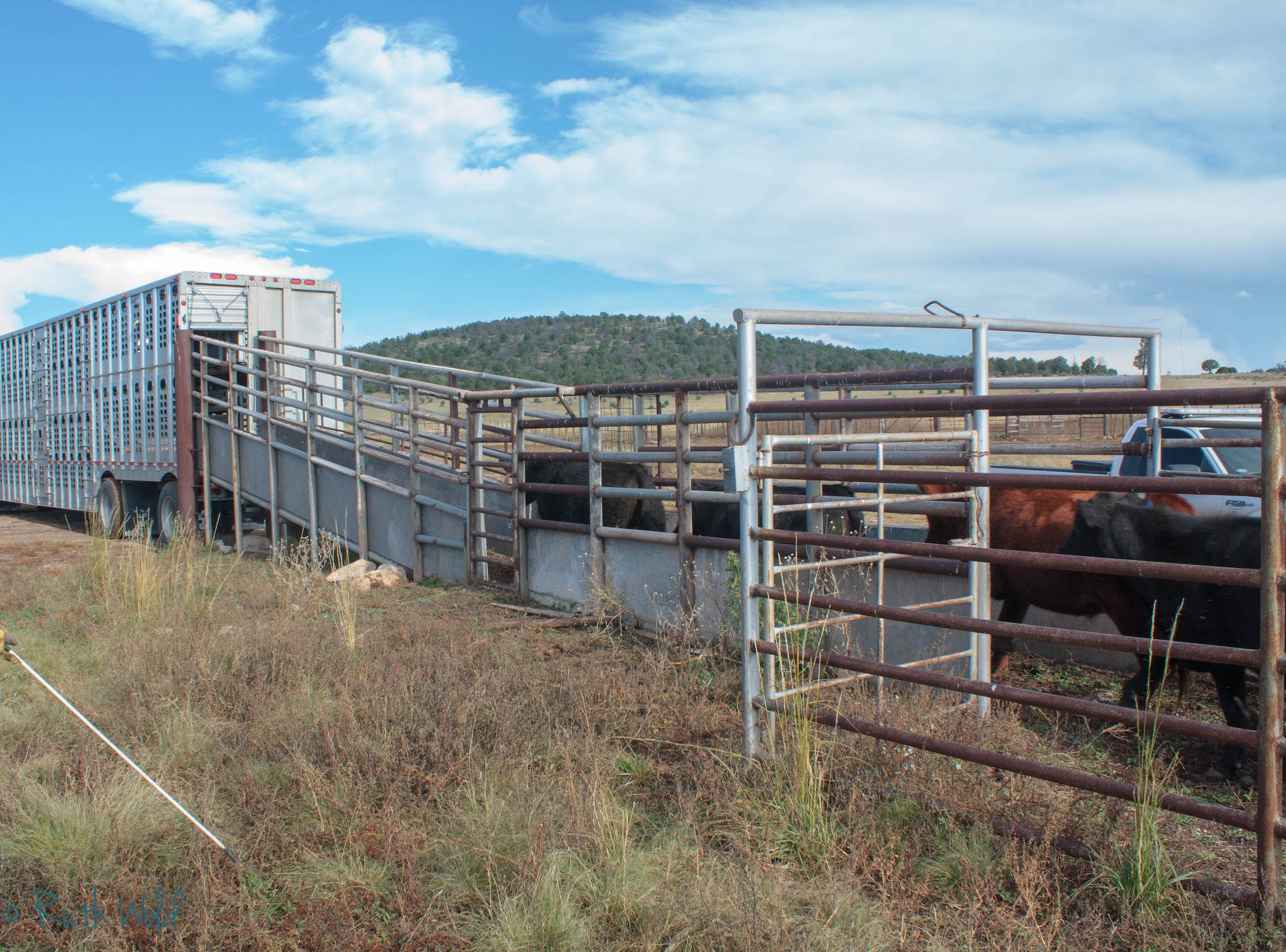 Getting onto the trailers. Fall 2017.
Getting onto the trailers. Fall 2017.
I hope you have enjoyed this quick view into the way things are done on a tribal-owned ranch in the central part of New Mexico. We do things a little different around here, but the common element is, as it is in Australian cattle ranching, to efficiently, humanely, and productively raise a highly palatable and marketable product for our consumers. We also love that we are able to live with our families and share opportunities that don’t come with traffic signals or street lamps or signs.
